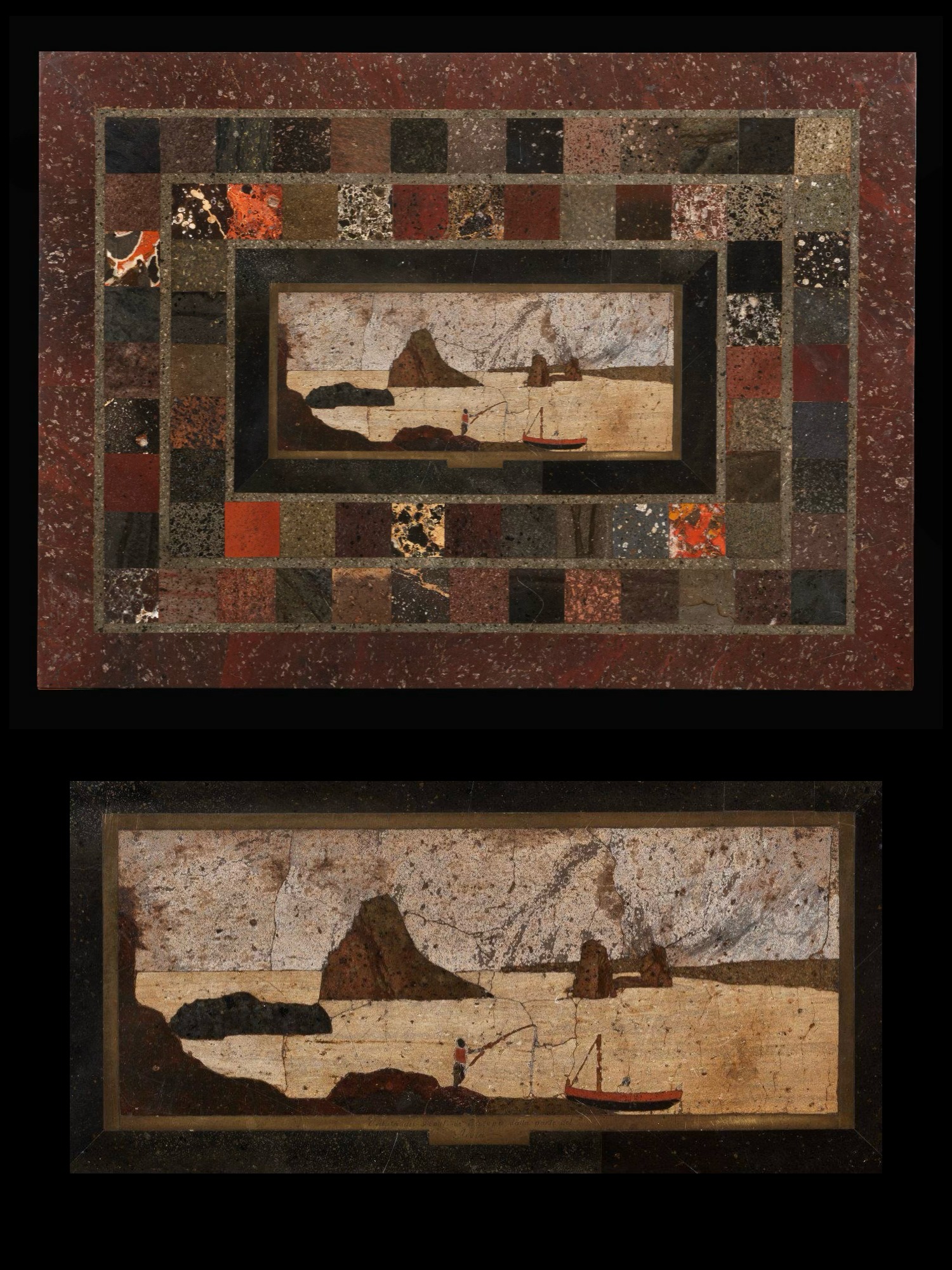Rectangular table top in Sicilian stone
→ Attributed to Giovan Battista and Carlo Calì, active in Catania from 1820 to 1840
Rectangular top in Etna lava stone and soft Sicilian stone.
Dimensions: 62.5 x 45.5 x 3 cm
Engraved on the metal strip in the centre of the top: ‘View of the Cyclops rocks from the island’ (Catania, about 1830-1840)
Description by Prof. Francesco Leone
The outer edge of the top is bordered by a wide frame of red Etna stone. This frame encloses two registers, separated by a grey lava stone border, of square inlays of lava stones and soft Sicilian jasper arranged symmetrically. In the centre, framed by a metal strip engraved with the site's identification, a soft stone inlay depicts the famous Cyclops rocks in the sea at Aci Trezza, in the province of Catania, the scene of Ulysses' wanderings and the vicissitudes of the Malavoglia. According to Homer, these lava-formed sea stacks, whose history is rooted in myth, were hurled by Polyphemus at Ulysses after he was blinded. They became even more famous after Luchino Visconti set his famous 1948 film The Earth Trembles in Aci Trezza, starring local inhabitants.
This commode is an extraordinary sample of lava concretions from Etna and soft stones from Sicily and, precisely because of its uniqueness, can be traced back to the Catania-based workshop of Giovan Battista Calì and his son Carlo, which specialised in working with Etna lava. A table by Carlo with a view of Catania and Etna is preserved at the Praz Museum in Rome. The Calì workshop also produced the tops of a dressing table and a table preserved in the Royal Palace in Naples, donated by Prince Giuseppe Manganelli in 1837 to King Ferdinand II of Naples and Queen Maria Teresa on the occasion of their wedding. A table with a top by Giovan Battista Calì depicting a view of Catania and Mount Etna was part of the furnishings of the apartments of Queen Maria Isabella, wife of Francesco I, in the so-called “Casino della Regina” in the Capodimonte woods.
The documents preserved in the State Archives in Naples accompanying the dressing table and table donated by Prince Manganelli to Ferdinand II and his wife Maria Teresa in 1837 clearly explain the origin and nomenclature of many of the stones used by the Calì family for their work. The documents refer to “black lava from Palagonia”, “red lava from Militello”, “lava from Giarre”, “basaltic lava from Licata”, “limestone from Val di Noto” and other materials with poetic and evocative names.
The top is evidence of a fascinating story for Italian decorative arts of the Restoration period, which still awaits the necessary in-depth study and appreciation by scholars.

